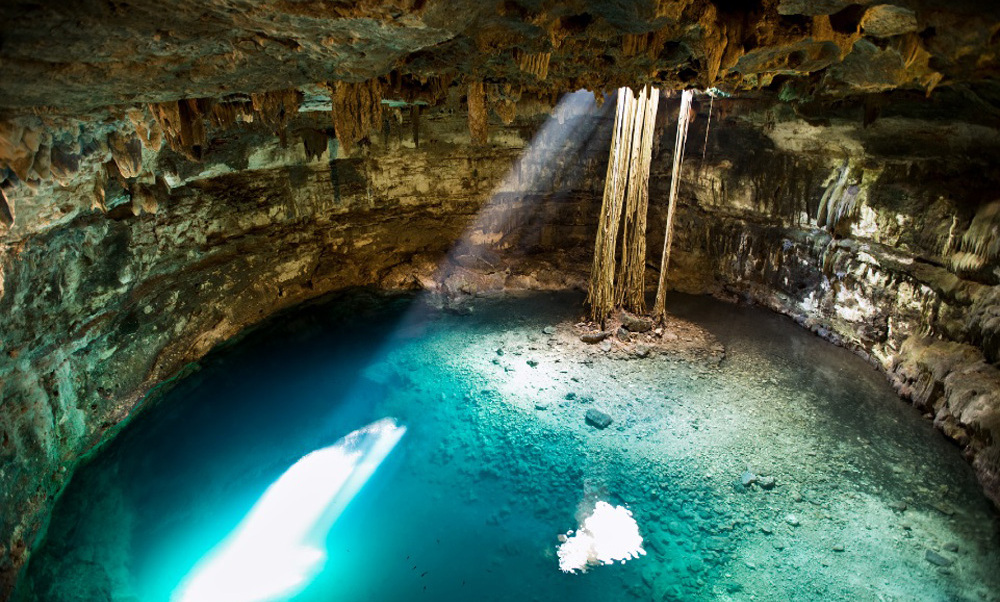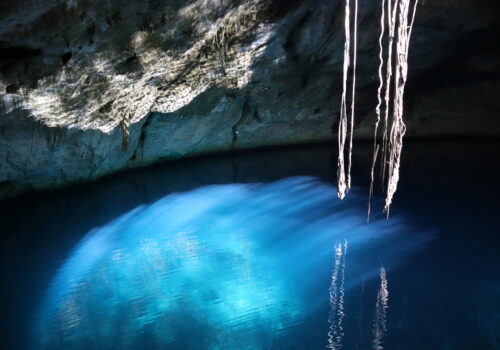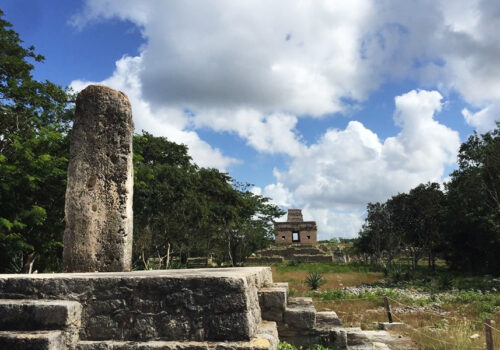“There is nothing better than a beautiful cenote!” When saying this, many people would totally agree with your statement but many others would have no idea what you are talking about. “Did you just say seh-no-t..? Wait, how was it? Can you say that again?” If you are one of those people who just nervously smiles when hearing the word cenote because you have no clue what this is and you just hope nobody asks, this article is for you!
Let’s start with the basic information. In English, the word cenote is pronounced /sɪˈnoʊti/ or /sɛˈnoʊteɪ/ (or more easily: seh-no-tay) whereas the original American Spanish pronunciation is [seˈnote]. The term comes from the Yucatec Maya word “ts’onot” which means “abysmal and deep” and generally refers to a location with accessible groundwater. In a few words, cenotes are natural sinkholes generated from the collapse of limestone bedrock, exposing the underneath groundwater. Cenotes are beautiful natural pools (or caves) with permanent waters fed by the filtration of rain and by the currents of underground rivers that are born in the heart of the earth. Although there are similar formations around the world, cenotes are especially found in the Yucatán Peninsula of México making them a very unique attraction.

Different types of cenotes
There are more than 6.000 cenotes around the Yucatan Peninsula, although only about 2.400 are registered. Many cenotes are connected through underwater rivers and passageways, creating a surreal underwater world. Compared to the huge amount of cenotes, only a few have been discovered and explored. Swimming in these amazing places is definitely a must-do experience. But if you are into adventure, you can’t miss the chance to dive or free dive in cenotes (make sure you do this with a certified school and/or experienced people). Get ready to explore a hidden world and create unforgettable memories.
Cenotes vary in shape, size, and age. There are four different types of cenotes: completely underground caves, semi-open cenotes, open cenotes and ancient cenotes that look like a pond or a lake.
Underground caves
Underground caves are the youngest cenotes and probably the most enigmatic. The water mirror is completely inside a cave making it the perfect place to visit for adventurous people. The color of the water can vary from emerald greens to intense blues, which can only be seen when sunlight enters through cracks or holes in the ceiling (if there are any). Here you can admire spectacular geological formations such as stalactites and stalagmites.

Semi-open cenotes
These types of cenotes are middle-aged. In fact, a semi-open cenote has a collapsed part that exposes the water underneath but it is not old enough to be fully exposed. This aperture lets sunlight coming in, creating beautiful rays of sun in the water. Some waters are so crystalline that you can admire the flora and fauna underwater.
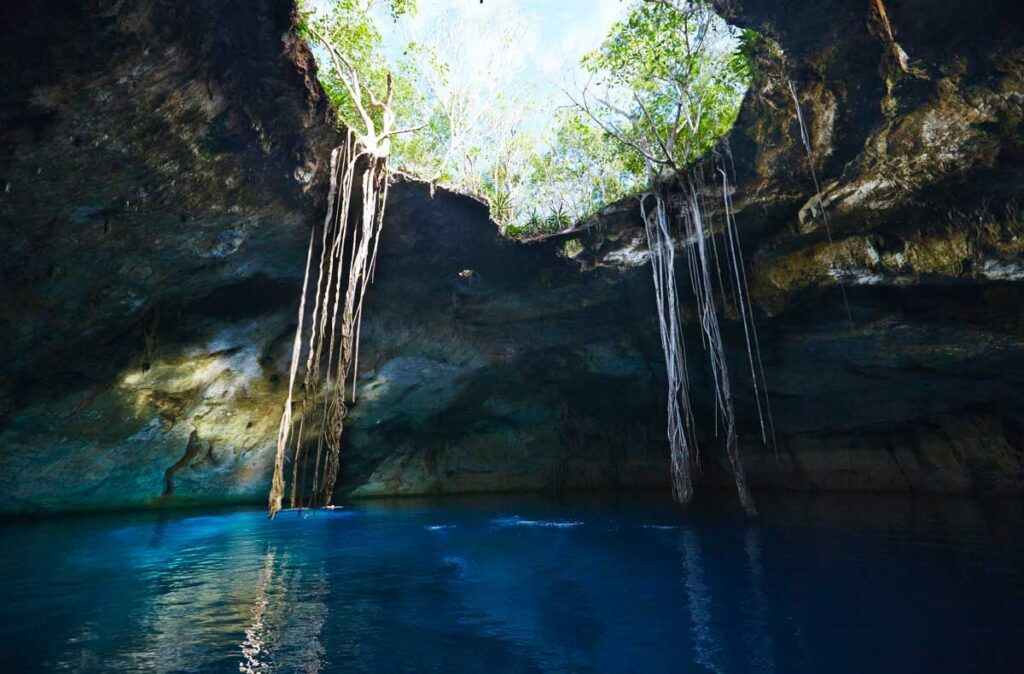
Open cenotes
Open cenotes are some of the oldest ones since over the years (and I mean millions of years) the covering roof collapsed leaving the cenote completely open. These cenotes definitely stand out for their incredible natural beauty. Plants, flowers, and roots usually cover these walls. They color the space and create a beautiful contrast between the shades of green and the blue water. Birds and butterflies make such cenotes even more magical.
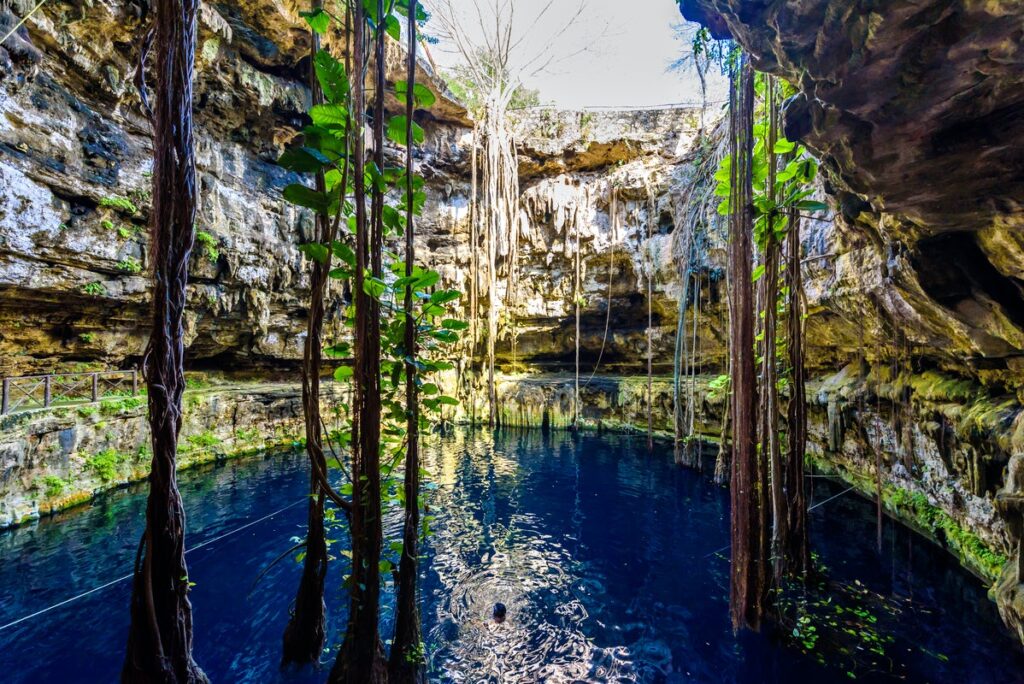
Ancient cenotes
Those sinkholes that are similar to lagoons are the most ancient cenotes, with many millions of years of existence. Over time, the roof that covered this type of cenote fell down and left the area completely exposed. Not having rocks above the water, they are the easiest to access and they are ideal to enjoy nature and relax in a natural paradise.
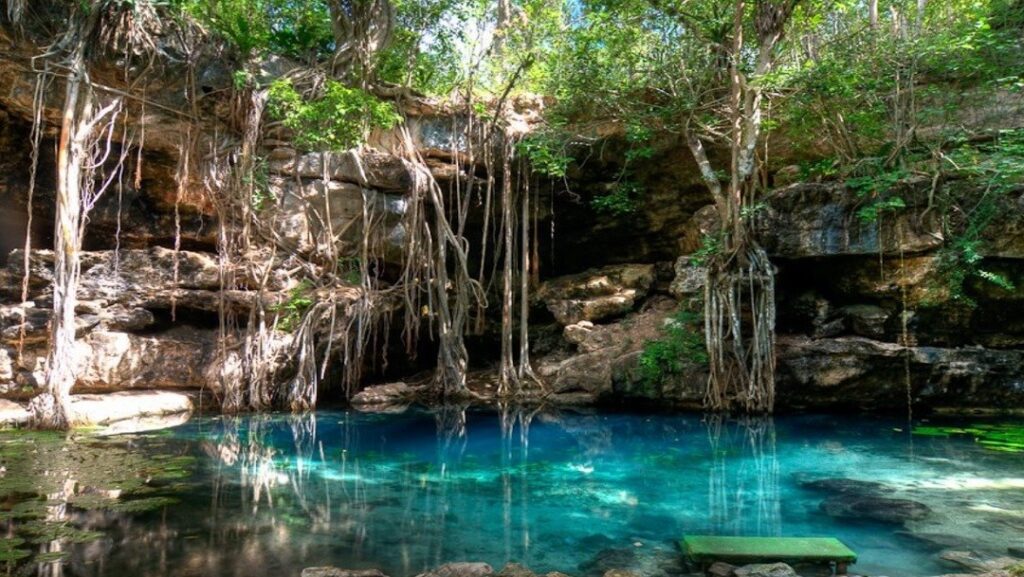
Formation of the cenotes
Over 66 million years ago, an asteroid crashed into Earth hitting a place now called Chicxulub, in the Yucatan Peninsula, around 45 minutes North-East of Mérida. Remember that giant meteorite that caused the extinction of the dinosaurs? This is exactly that meteorite.
The strong impact not only killed the dinosaurs but also dramatically change the planet. It altered the limestone sediments under the Earth’s surface of the area making it more susceptible to erosion. Very heavy naturally-acidic rains characterized the following years, dissolving away the limestone rock and creating natural openings to the underground rivers.
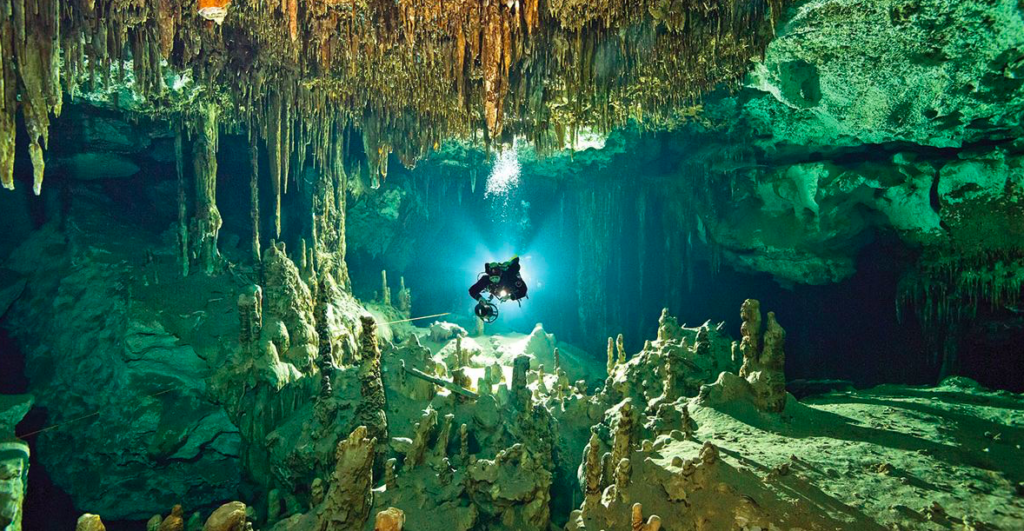
Cenotes and the Maya
Cenotes played a significant role for the Maya as they were the only source of fresh water in the area, allowing the settlement of ancient Mayan cities. They were also sacred places, considered the gateway to the world of the dead called Xibalbá (underworld). Here is where the Mayan gods would visit, especially Chaac, the Mayan god of rain, lightning, and thunder. Inside the cenotes, offerings and rituals were performed to please the Gods. At the bottom of sacred cenotes, jade, pottery and gold have been discovered, along with human remains.
Cenotes are unique incredible places where you can admire nature in all its beauty. It is very important to take care of these places and always preserve nature. Don’t leave rubbish behind and if you find any, please recollect them. Make sure you don’t wear any sunscreen nor mosquito repellent as they affect the natural eco-system. Protecting nature is everyone’s task and it is our responsibility to leave no trace.
Now that you read this article, you are totally ready to proudly tell your mom: “Hey mom, I’m going to Yucatán. Can’t wait to swim in cenotes. Don’t know what that is? Don’t worry, let me explain it to you”. No more weird faces when you hear the word cenote. Now that you know more about cenotes, you definitely need to check them out to really appreciate their incredible beauty! In this post, we have made a list of beautiful cenotes you cannot miss when visiting Yucatán!
If you want to find out more about the amazing cenotes in Yucatán, subscribe to Barrio Vivo now!
